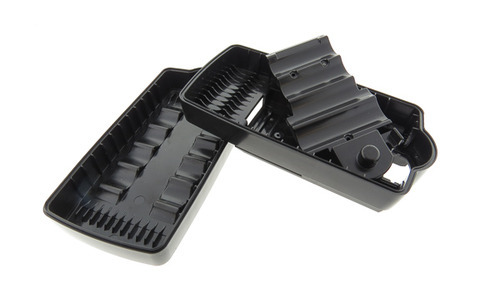Current manufacturing procedures are moving forward by replacing metal components each day in a new industry. This not a trend or a fad, it’s a new industry standard that is changing the market and the functionality of every single device that has mechanical parts. There is a lot of work to do, conversions are not going away, and there are many good reasons for it to keep advancing. There is still a rather long list of advantages in the use of plastic that must be explored. A reliable plastic injection molding manufacturer can’t be left behind when it comes to cover potential savings in costs of production. With this in mind, let’s take a look at some of the benefits that a manufacturing company can enjoy by embracing conversion:
· Increased Durability
A lot of machines require metal joints to fulfill their tasks, the machining process to make these parts usable is seamless since most pieces are created using an injection mold. When the parts are used in a handling system, there almost zero chance for the joint to fail as it does what is supposed to accomplish. The same thing happens with a lot of other parts that seem to have overcome a common issue related to their performance: by using plastic there is increased durability on these parts. This good news on both ends, since manufacturers can save money and keeps the costs of maintenance low.
· Low Manufacturing Cost
Talking about low costs in manufacturing was not something allowed years ago. Metal pieces are hard to create since the raw material is very hard to process. The conversion has relegated metal to the role of molds. The current alternative manufacturing procedures using resins and plastics had decreased of any moving part to a mere quarter of the previous cost it had when it was done using metal. Top this benefit with the fact that companies are now open to working with any volume on projects and manufacturing has never been cheaper as it is now.
· Noise Reduction
Metal create sounds. Let’s rephrase that bit. Metal creates a lot of annoying sounds. Wherever is as working parts or if metal components are being manufactured, It’s a nuisance that can create health hazards for workers on both ends. Manufacturers of metal piece usually have to equip their worker with noise dampening equipment, while the technicians using machinery with metal components also need some kind of protection to get anything done. Plastic on a good day creates vibrations, and very little noise comes from it while it’s worked on, or if it’s functioning as a mechanized component.
· Increased Dimensional Tolerances
The modern concepts of engineering used by any plastic injection molding manufacturer allow the developer to create even the most complex projects. No challenging dimension can’t be achieved with 3D printing and the technology related to it. Most of these pieces have a well-thought process of development that can help to make them either as sturdy or as light as they are needed, giving the developer full control over the tolerance factor. The modern CAD model can also put defining numbers on measurements to make the fulfillment of every project as precise as it’s needed.

plastic injection molding, *picture from indiamart.com
· Increased Design Flexibility
Most professionals can easily tell you how plastic parts crafted with injection molding procedures display unique designs that are difficult to create using metal. The design is not limited to the machining requirements or even the metal used for the build. The hard facts are that plastic allows for more complex shapes, usually ones that are more diverse in angles and also easily adaptable. The complexity of the design opens the door for an increased range of possibilities that go further than the original application. There is also the fact that plastic parts when assembled properly eliminate any need for lubrication. This means mechanized components will run smoothly for longer times.
· Resistance to Outside Elements
The plastics used in modern manufacturing have a lot of resistance to high temperatures as well as many chemicals components that could damage them. For years metal manufacturers had to deal with ever-changing tolerance of the materials when they were exposed to specific temperatures. Many alloys and coatings came out of that process of trial and error. Plastics, however, require little tampering when it comes to their ability to withstand temperatures or even the most corrosive substances.
· Reduced Weight
This one can be easily tested out by you. Just take two similar components made with plastic and metal and weigh them on your hand. The plastic piece is usually engineered with internal braces, and some long thought process has gone into building the part with strong points over a single solid construction. Plastic is so versatile that can offer the option to make the part stronger with less weight.
· Package and Shipping costs
Plastic components are created with a lot less weight than their metal counterparts. This means that package and shipping costs a lot less. Larger items need to be cared for depending on their sturdiness, but lighter components are easy to handle. Protection is less of an issue since they are likely to take very little damage.
